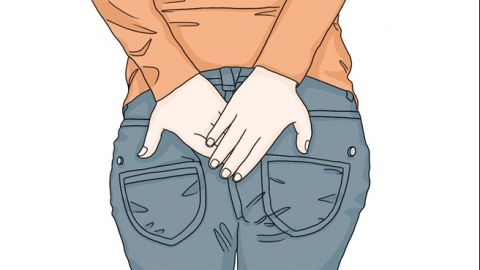How to treat inflammation in the muscle间隙 around the anus
Generally, inflammation in the anal muscle gaps may be related to prolonged sitting, poor bowel habits, perianal inflammation, perianal abscess, or anal fistula. It is recommended to seek timely treatment based on the underlying cause, such as general care or medication. If the condition is severe, medical attention is advised. Detailed explanations are as follows:

1. Prolonged Sitting
Maintaining the same sitting posture for long periods and lack of physical activity can compress the perianal tissues and impair local blood circulation, potentially leading to inflammation in the anal muscle gaps. It is recommended to get up and move around regularly, or apply warm compresses and gently massage the surrounding tissues to improve blood circulation and relieve perianal pressure.
2. Poor Bowel Habits
Frequently suppressing bowel movements or exerting excessive force during defecation may damage the anal muscles, leading to inflammation. It is important to develop healthy bowel habits, avoid prolonged retention of stool or extended time on the toilet. Additionally, control the force during defecation and avoid excessive straining.
3. Perianal Inflammation
Perianal inflammation is usually caused by bacterial or other pathogenic infections due to poor hygiene in the anal area. When an inflammatory response occurs locally, symptoms such as redness, swelling, and itching around the anus may develop. Treatment may include topical antibiotics such as erythromycin ointment, fusidic acid cream, or mupirocin ointment, as directed by a physician.
4. Perianal Abscess
A perianal abscess primarily results from an infection of the anal glands. When inflammation repeatedly irritates the perianal spaces, an abscess can gradually form, causing symptoms such as redness, swelling, pain around the anus, and possibly fever and chills. It is recommended to follow medical advice and use medications such as amoxicillin capsules, cefradine capsules, or metronidazole tablets for treatment.
5. Anal Fistula
An anal fistula is a complication that arises from worsening perianal abscess. If inflammatory secretions in the local area are not properly managed and continue to irritate the anal muscle gaps, an inflammatory response may occur, potentially accompanied by symptoms such as pus discharge and itching from the fistula opening. Prompt surgical intervention is recommended under medical guidance, such as excision of the fistula. Post-surgery, treatment may include intravenous antibiotics like levofloxacin hydrochloride injection, etimicin sulfate injection, or ornidazole sodium chloride injection, as directed by a physician.
It is recommended to first identify the cause of the inflammation in the anal muscle gaps before initiating targeted treatment to avoid delaying recovery. Additionally, maintaining cleanliness and dryness in the affected area during treatment is important to reduce the risk of infection.




